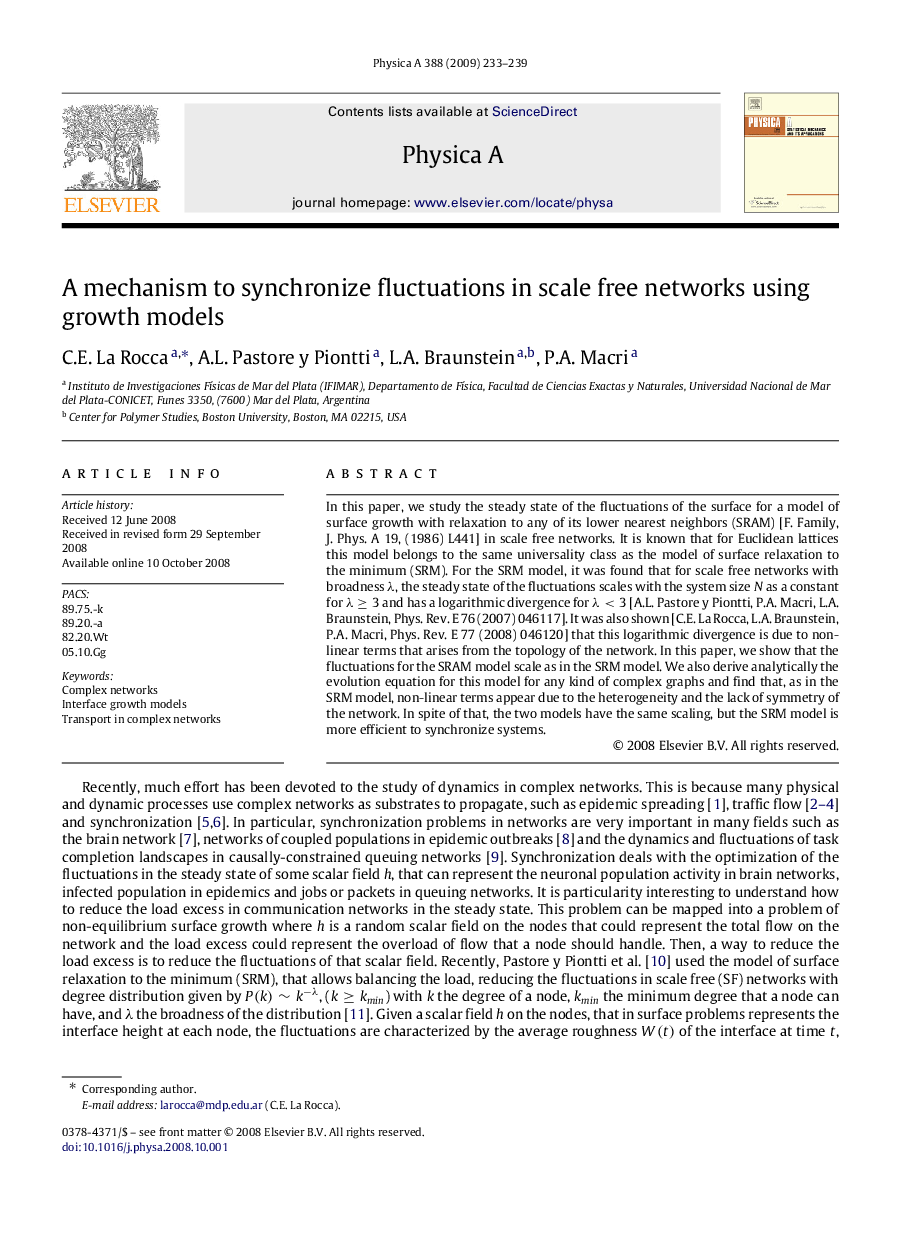| Article ID | Journal | Published Year | Pages | File Type |
|---|---|---|---|---|
| 974762 | Physica A: Statistical Mechanics and its Applications | 2009 | 7 Pages |
Abstract
In this paper, we study the steady state of the fluctuations of the surface for a model of surface growth with relaxation to any of its lower nearest neighbors (SRAM) [F. Family, J. Phys. A 19, (1986) L441] in scale free networks. It is known that for Euclidean lattices this model belongs to the same universality class as the model of surface relaxation to the minimum (SRM). For the SRM model, it was found that for scale free networks with broadness λ, the steady state of the fluctuations scales with the system size N as a constant for λâ¥3 and has a logarithmic divergence for λ<3 [A.L. Pastore y Piontti, P.A. Macri, L.A. Braunstein, Phys. Rev. E 76 (2007) 046117]. It was also shown [C.E. La Rocca, L.A. Braunstein, P.A. Macri, Phys. Rev. E 77 (2008) 046120] that this logarithmic divergence is due to non-linear terms that arises from the topology of the network. In this paper, we show that the fluctuations for the SRAM model scale as in the SRM model. We also derive analytically the evolution equation for this model for any kind of complex graphs and find that, as in the SRM model, non-linear terms appear due to the heterogeneity and the lack of symmetry of the network. In spite of that, the two models have the same scaling, but the SRM model is more efficient to synchronize systems.
Related Topics
Physical Sciences and Engineering
Mathematics
Mathematical Physics
Authors
C.E. La Rocca, A.L. Pastore y Piontti, L.A. Braunstein, P.A. Macri,
